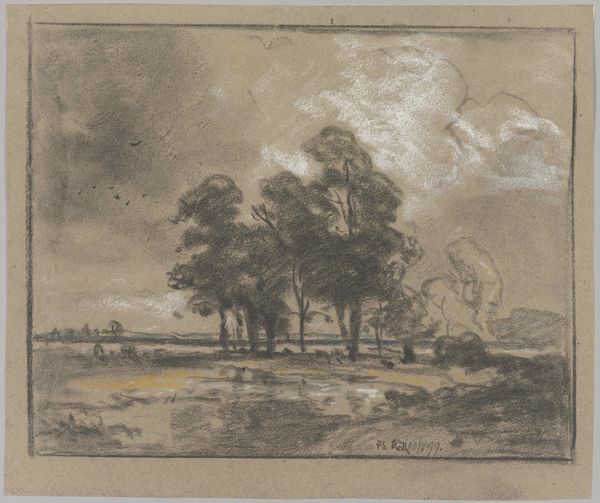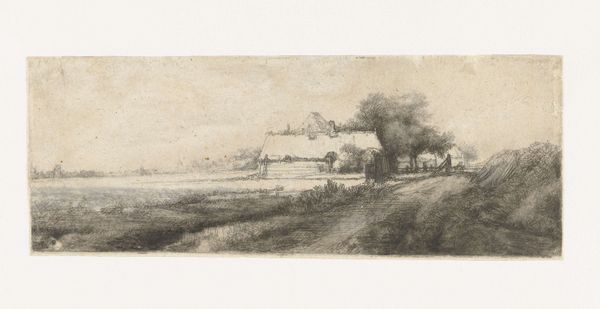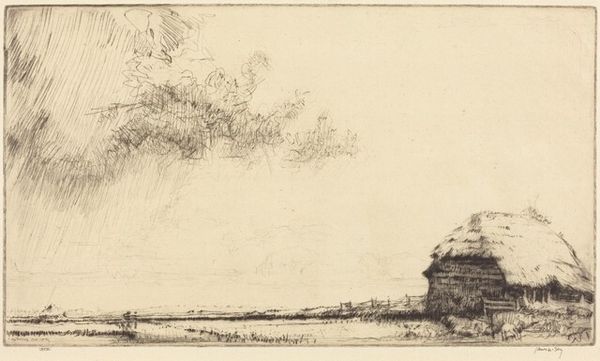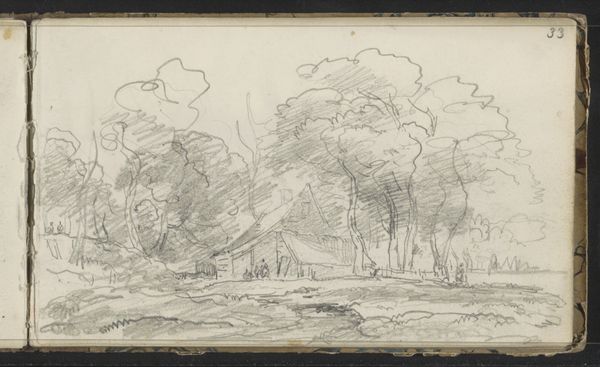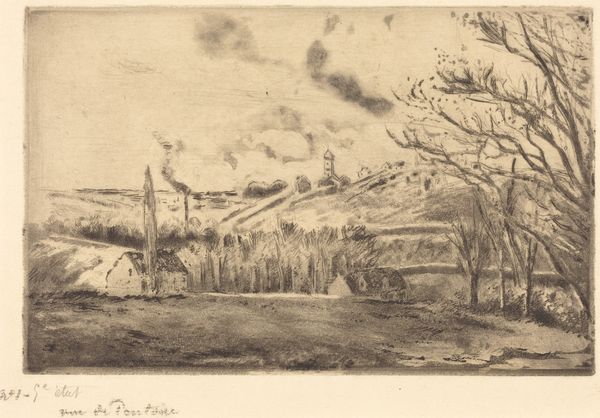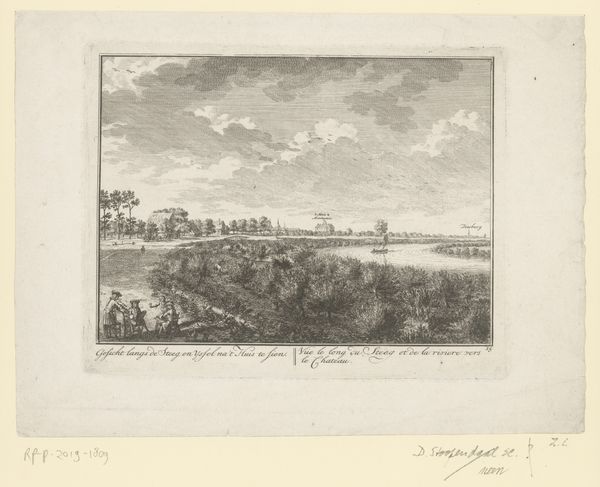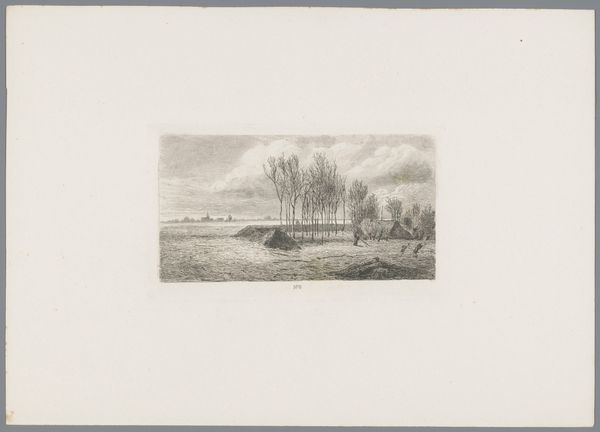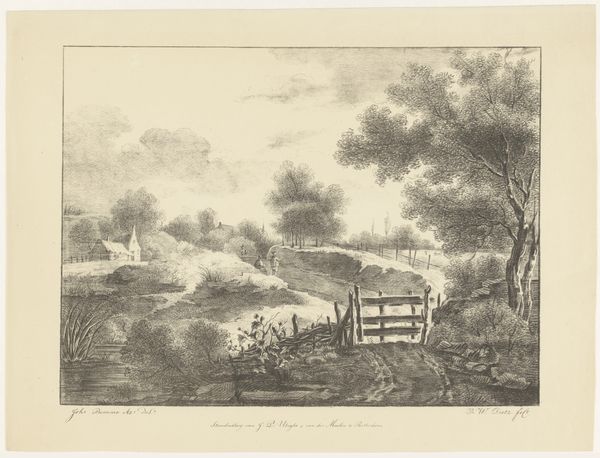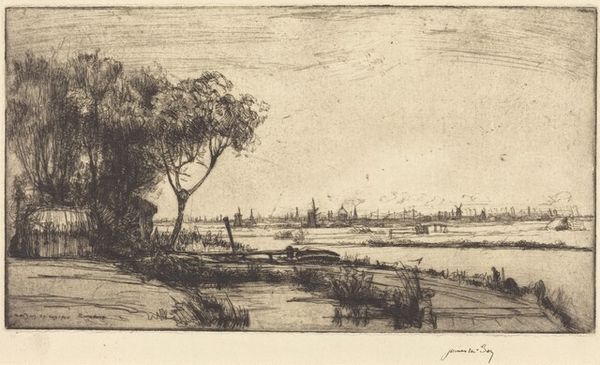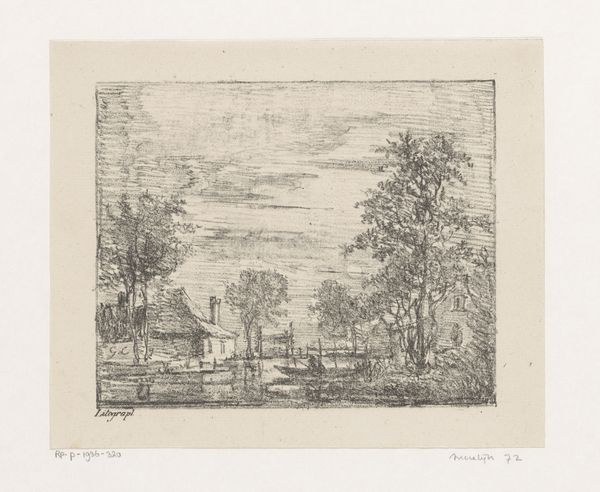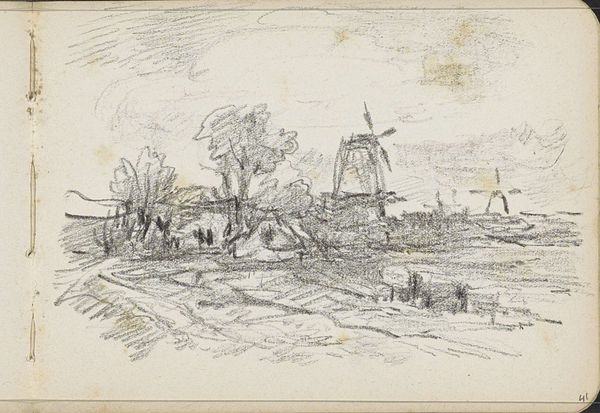
Dimensions: 9 7/16 x 12 3/8 in. (23.97 x 31.43 cm) (plate)11 1/2 x 17 1/4 in. (29.21 x 43.82 cm) (sheet)
Copyright: No Copyright - United States
Editor: This is Joseph Pennell’s “The Landscape of Work,” created in 1910. It’s an etching, part of the Minneapolis Institute of Art’s collection. The overwhelming feeling I get is… bleakness. How can a landscape be about work? What do you see in this piece? Curator: Bleakness is a strong word, but fitting. Pennell isn't simply depicting a factory; he's showing us the byproducts of industrialization. How does the imagery of billowing smoke stacks, typical of Impressionism, challenge our understanding of progress and the social cost of labor? It looks less like artistic interpretation of social life, more like visual rhetoric! Editor: Visual rhetoric? I see what you mean; the smoke almost feels… deliberate. But is it fair to equate the environmental cost with labor itself? Were those the artist’s intention? Curator: That's precisely what we must unpack! By titling it "Landscape of Work", Pennell inextricably links the exploitation of the environment with the laboring class, creating what some scholars argue is a portrait of societal degradation. Notice how he obscures human presence and emphasizes structures. What could that signify, in the context of labor movements at the time? Editor: So the missing humans almost amplify the inhumanity of it all. That makes you wonder about labor laws, worker exploitation and all that. Curator: Exactly! Pennell forces us to confront the ethical dilemmas inherent in industrial progress. We’re not simply observing a scene; we are implicated in its narrative. Are we complicit? Editor: I initially saw just a bleak landscape. Now, I realize Pennell is prompting a conversation about accountability. Thanks. Curator: Absolutely, and it's a crucial one for us to continue having today. There is always a landscape behind the work of art, no?
Comments
No comments
Be the first to comment and join the conversation on the ultimate creative platform.

